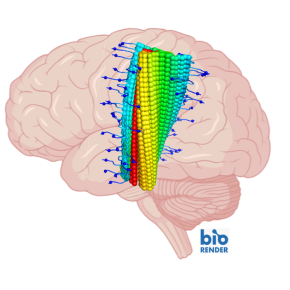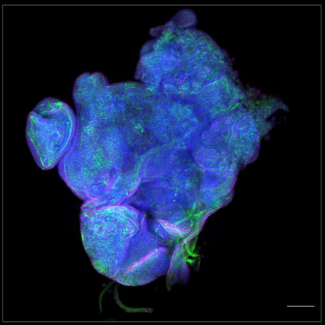
A “pseudo-prion” molecule protects the brain from Alzheimer’s disease in mice
A research team1 led by scientists from CNRS and Université Grenoble Alpes has discovered that the injection of a modified “pseudo-prion” protein into the brains of mice could protect the animals against Alzheimer’s disease, a pathology that currently affects nearly a million people in France.
This neurodegenerative disease originates from lesions caused by an abnormal accumulation in the brain of two proteins: amyloid-β and Tau. These lesions damage neurons and their synapses, ultimately causing an inability to create new memories.
To block these processes, the scientists injected a mutated amyloid-β protein (Icelandic mutation) into the brains of mice that model the disease. This very rare protein, called amyloid-βice, had been discovered in certain individuals of Icelandic origin who presented with improved cognitive ageing and never developed Alzheimer’s disease.
The results were surprising: the synapses returned to their normal state and there were no memory losses characteristic of the disease. Administration of this modified protein2
thus protected the brains of the mice against all the malfunctions related to the disease. Furthermore, the scientists showed that a single dose was sufficient to trigger this protection, which remained active for several months.
The scientific community had previously agreed to the hypothesis that the administration of amyloid-β proteins could only amplify the pathology because they behave like “pseudo-prion” proteins3
. This new study published on 14 June 2024 in Molecular Psychiatry, shows for the first time in mice that “pseudo-prion” amyloid-β proteins can protect the brain against the damage characteristic of Alzheimer’s disease. These findings could thus provide a starting point for a new category of preventive therapies to treat people with early-stage neurodegenerative diseases and block the course of the disease, thanks to the injection of protective prions.

- 1The laboratories working on this study were the Laboratoire des Maladies Neurodégénératives (CNRS/CEA/Université Paris-Saclay) and the Grenoble Institut des Neurosciences (Université Grenoble Alpes/INSERM/CEA/CHU Grenoble Alpes).
- 2The proteins administered were created artificially in the laboratory.
- 3Abnormal prion proteins are generally responsible for severe neurodegenerative diseases such as mad cow disease or Creutzfeldt-Jakob disease. Their normal form is naturally present in our brains. However, when a prion protein changes shape it becomes abnormal and then other surrounding proteins adopt the same abnormal shape, thus amplifying the processes under way. Amyloid-β protein can also behave in this way, so it is considered as a “pseudo-prion”.
Transmissible long-term neuroprotective and precognitive effects of 1-42 beta-amyloid with A2T Icelandic mutation in an Alzheimer’s disease mouse model. Marina Célestine, Muriel Jacquier-Sarlin, Eve Borel, Fanny Petit, Fabien Lante, Luc Bousset, Anne-Sophie Hérard, Alain Buisson and Marc Dhenain. Molecular Psychiatry, June 14, 2024.


